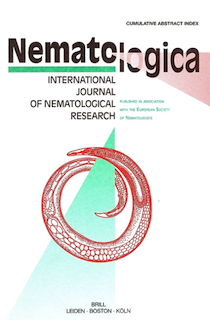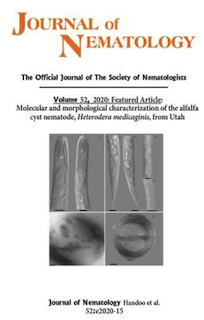⏳ History
Historical Development of Science of Nematology in the World and India 🇮🇳
Which of the following is correct regarding nematode?
WORLD
- 1743: J.T.
Needhamdiscovered first plant parasitic nematode inside Seed Gall or Cockles of Wheat. He named it as Vibrio tritici. But later it was named as Anguina tritici. - 1855: M. J.
Berkeleyfrom England found a plant parasitic nematode producing Galls on the roots of cucumber in a greenhouse. Cornu (1879) described the causal organism as Meloidogyne incognita. - 1857:
Julius Kuhna German scientist found stem and bulb nematodes (Ditylenchus dipsaci) infecting heads of Teasel.
- 1859:
1st landmark in development of Nematology:Schachtreported the decline of sugar beet is due to Cyst nematode.- In Europe for sugar production large scale of sugar beet cultivation was done. Sugarbeet fields of Germany started declining in beet production due to “Beet Tired Soil” or “Beet Weariness”.
- This reflect in slow down of many industries due to non-supply of raw materials infected by sugarbeet nematode.
- Later named as Heterodera schachtii by Schmidt in 1871.
- 1865:
H. C. Bastian, Father of Nematology. He wrote monograph of the Anguilluidae. - 1871:
Kuhnfirst usedcarbon bisulphide(CS2) for control of Sugar Beet cyst nematode. - 1892:
2nd landmark in development of NematologyAtkinson, reported involvement of root knot nematode in disease complex in association with Fusarium oxysporum f. vasinfectum causing Vascular Wilt of Cotton.
- 1907-1932:

N. A Cobb, in USA was credited to coin the word Nematology and nema.- He first developed Sieving and decanting technique using metallic sieves for wet screening of soil for extraction of nematodes during 1918. Methods of preservation and mounting of nematodes, section cutting, use of camera lucida for drawing magnified view of nematodes.
- Detected morphological structures associated with cuticle like amphid, phasmid and deirid.
- Due to immense contribution to the science of Nematology.
- Considered as the
Father of Modern Nematology.Father of American Nematology.
- 1933:
T. Goodeypublished Books:- Plant parasitic nematodes and the diseases they cause in 1913.
- Soil and Fresh Water Nematodes in 1951.
- Nematicide Fumigants:
3rd landmark in development of Nematology- 1943:
DD mixture(1,3 dichloropropene-1,2 dicloropropane) byW. Carter. - 1945:
EDB(Ethylene dibromide) by J. R.Christie - Both issued an era of soil fumigation in controlling phytonematodes affecting various crops in the field.
- 1943:
- 1955:
4th landmark in development of Nematology- W. S.
Mountain& K.Patrickused tissue culture technique to obtain Xenic culture of Pratylenchus minyus on excised maize roots in nutrient agar media.
- W. S.
- 1956: Publish of first quarterly international nematology Journal “Nematologica” by European Society of Nematologists.

- 1958:
5th landmark in development of Nematology- W. S.
Hewitt, D. J.Raski& A. C.Goheenfirst observed the viral disease transmission by nematodes in USA. - Grape vine fan leaf virus was transmitted by the nematode, Xiphenema index.
- W. S.
- 1961:
Society of Nematologistsfound in USA. - 1969: 1st “Journal of Nematology” published by Society of Nematologists, USA.

- 1975-1984: Global importance of
Root knot nematode, IMP (International Meloidogyne Project) funded by USAID was in operation under headship ofJ.N Sasserat North California University, USA.
INDIA.
- Nematology as a separate branch of Agriculture Science in India has been recognized since 1966.
- The history and development of Nemtology in India have been listed below in chronological order.
- 1901: Barber reported
Root knot nematodeinfecting tea in Devala Estate, Tamil Nadu South India.1st PPN reported from India. - 1906: Butler reported root knot nematode on Black pepper in Kerela.
- 1913-19: Butler reported
Ufra Diseases on ricecaused by Ditylenchus angustus in Bengal. - 1919: Milne recorded seed gall nematode (Anguina tritici) of wheat in Punjab.
- 1936: Dastur reported
White tip disease of ricecaused by Aphelenchoides besseyi in Central Provinces of India. - 1958: Vasudeva reported Molaya disease of wheat (Heterodera avenae) from Neem ka Than, Sikar, Rajasthan and later by Sesadhari (1959).
- 1961:
FGW Jonesreportedpotato cyst nematode(Globodera rostochiensis) for the first time from Nilgiri Hills (TN). - 1961: Nematology unit established at the Central Patato Research Institute, Shimla.
- 1966: Nair, Dass and Menon reported the burrowing nematode on banana for the first time from Kerala.
- 1966:
Division of Nematologyestablished at IARI, New Delhi - 1969: Nematological Society of India founded and first All India Nematology Symposium held at IARI, New Delhi.
- 1971: Indian Journal of Nematology published.

- 1977:
All India Co-ordinated Research Project (AICRP)on nematode pests of crops and their control started functioning in 14 centres in India with its Project Co-ordinator at IARI, New Delhi.
References
- Dasgupta, M. K. (1998). Phytonematology. Nayaprakash, Calcutta.
- Walia, R. K and Bajaj, H. K (2014). Textbook of Introductory Plant Nematology. Directorate of Knowledge Management in Agriculture, ICAR, New Delhi.
- Ravichandra, N. G. (2019). Plant Nematology. I. K. International Publishing House Pvt. Ltd., New Delhi.
- Dropkin, V. H. (1996). Introduction to Plant Nematology, Academic Press, New York.
Which of the following is correct regarding nematode?
WORLD
- 1743: J.T.
Needhamdiscovered first plant parasitic nematode inside Seed Gall or Cockles of Wheat. He named it as Vibrio tritici. But later it was named as Anguina tritici. - 1855: M. J.
Berkeleyfrom England found a plant parasitic nematode producing Galls on the roots of cucumber in a greenhouse. Cornu (1879) described the causal organism as Meloidogyne incognita. - 1857:
Julius Kuhna German scientist found stem and bulb nematodes (Ditylenchus dipsaci) infecting heads of Teasel.
- 1859:
1st landmark in development of Nematology:Schachtreported the decline of sugar beet is due to Cyst nematode.- In Europe for sugar production large scale of sugar beet cultivation was done. Sugarbeet fields of Germany started declining in …
Become Successful With AgriDots
Learn the essential skills for getting a seat in the Exam with
🦄 You are a pro member!
Only use this page if purchasing a gift or enterprise account
Plan
Rs
- Unlimited access to PRO courses
- Quizzes with hand-picked meme prizes
- Invite to private Discord chat
- Free Sticker emailed
Lifetime
Rs
1,499
once
- All PRO-tier benefits
- Single payment, lifetime access
- 4,200 bonus xp points
- Next Level
T-shirt shipped worldwide

Yo! You just found a 20% discount using 👉 EASTEREGG

High-quality fitted cotton shirt produced by Next Level Apparel